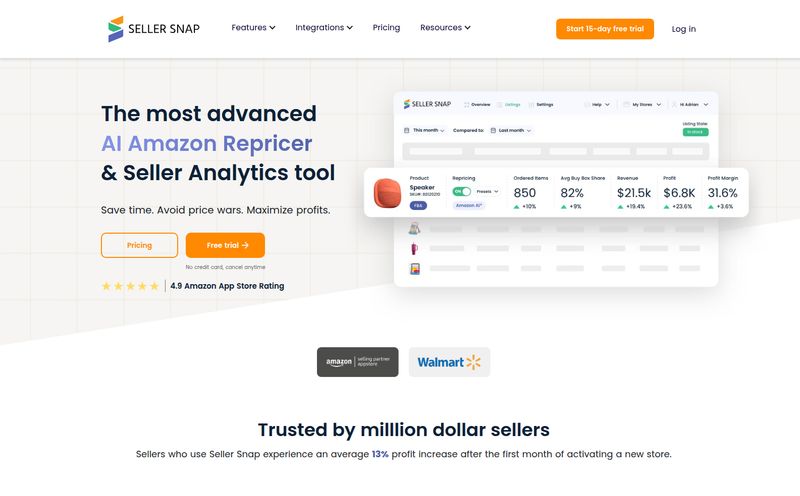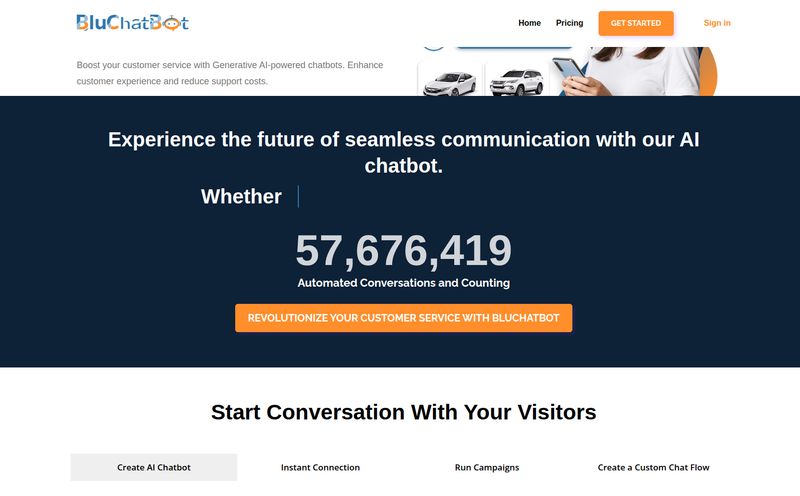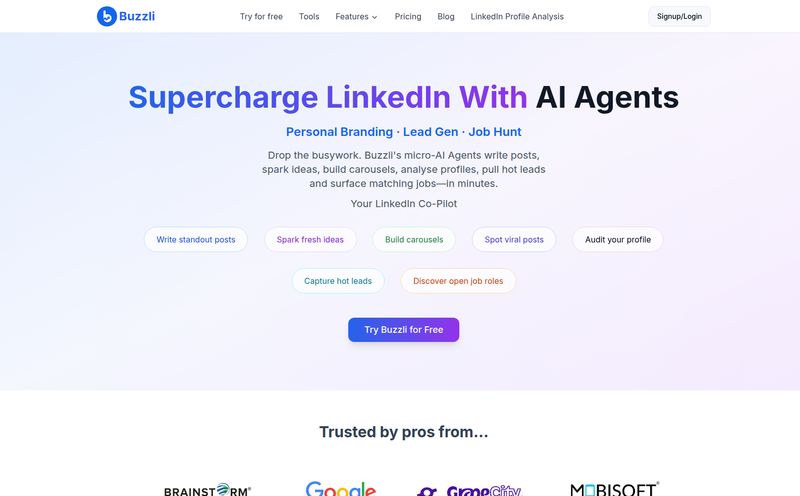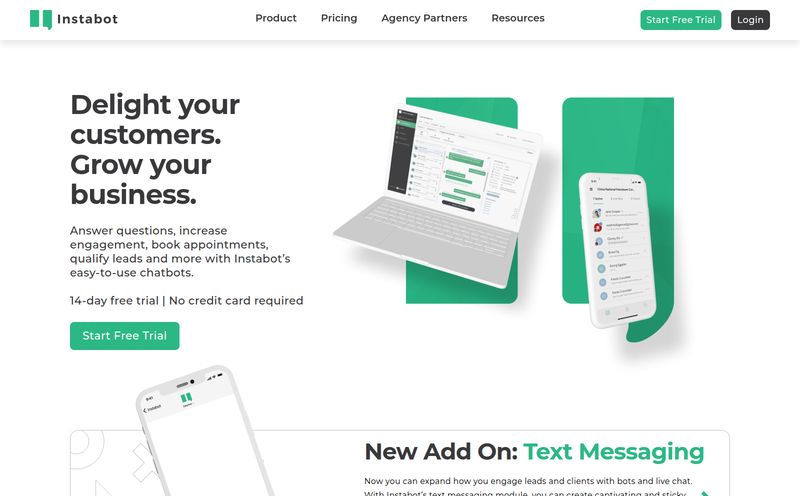You know, in the SEO and digital marketing world, you stumble upon a lot of tools. Some are game-changers, some are duds, and some… some are just plain weird. But every so often, you find something that genuinely makes you say, “Whoa, that’s cool.” That was my reaction when I first heard about HiddenArt.ai. The promise was simple, yet brilliant: an AI tool designed specifically to create those mind-bending images with hidden text or even other pictures inside them. You've seen them, right? The kind of optical illusion art that’s pure magic for social media engagement.
I was ready to dive in, play around, and write a glowing review about the next big thing for content creators. I pictured viral marketing campaigns, clever blog banners, and just some good old-fashioned creative fun. So I navigated to the site, eager to start prompting. And I was met with… this.
404: NOT_FOUND.
A digital dead end. It’s like finding a treasure map where 'X' marks a 404 page. What happened to this incredibly promising platform? Let's be detectives for a day and piece together the story of the coolest AI tool that seems to have vanished into thin air.
What Was HiddenArt.ai Supposed to Be?
Before it became a digital ghost, HiddenArt.ai had a solid and really compelling pitch. It wasn’t just another Midjourney or DALL-E clone. It had a niche, a speciality that made it stand out in the increasingly crowded AI gold rush. Its main gig was generating artwork with hidden elements. Imagine a beautiful, swirling abstract nebula that, if you squint just right, spells out your brand name. Or a portrait of a lion where the mane is made of the word “COURAGE.”
That’s the kind of stuff that stops the scroll. It’s sticky. People share it, they comment on it, they try to find the secret message. For a blogger or a marketing pro, that’s pure gold.

Visit HiddenArt.AI
But the vision for HiddenArt.ai was bigger than just a simple generator. It was aiming to be a social learning community. The idea was that users could not only create their own masterpieces but also see what others were making, share prompts, and even “remix” other people’s work. This is a fantastic model. It lowers the barrier to entry, because instead of starting from a blank page with prompt anxiety, you could grab something cool and tweak it. It turns a solitary act of creation into a collaborative experience. I’ve always felt the best tools are the ones that build a community around them.
A Look at the Features (The Ghost in the Machine)
Based on the digital breadcrumbs it left behind, we can get a pretty good picture of what using the platform would have been like. It was more than just a one-trick pony.
More Than Just a Generator, A Social Hub
The social and remixing features are what really caught my eye. The AI space can feel a bit isolating sometimes – just you, a text box, and an algorithm. By building a community, HiddenArt.ai was trying to create an ecosystem. A place where you could get inspired, learn new prompting tricks, and connect with other creators. This collaborative approach is something I think we need more of. It helps everyone get better, faster. It’s the difference between being handed a chisel and being invited into a sculptor’s workshop.
Prompting Puzzles: The Skill Behind the Art
Of course, it wasn’t all push-button magic. One of the known challenges with this kind of “illusion diffusion” art is that it can take real skill to write an effective prompt. You’re not just describing a scene; you’re trying to balance two distinct visual ideas—the overall image and the hidden element—without one overpowering the other. It's a delicate dance. This isn’t really a knock against the tool, but a reality of the craft. It would have required a bit of a learning curve, which is probably why the community and remixing features were so important. You could learn from the masters.
The Million-Dollar Question: What Did It Cost?
Every good tool has a price tag, and HiddenArt.ai’s pricing structure seemed pretty reasonable, to be honest. They had a plan for everyone, from the casual hobbyist to the serious professional. Again, this is based on the information available before the site went dark, so take it with a grain of salt.
| Plan | Price | Features |
|---|---|---|
| Free / Starter | $0 | 15 credits, 100M disk space, Community Forum Support. A great way to test the waters. |
| Hobby | $5 /month | 500 credits, 500M disk space, Community forum support. Pretty generous for the price. |
| Professional | $15 /month | 1500 credits, 2G disk space, Private Mode, Premium help center support. The private mode is a big deal for commercial work. |
| Custom | Bespoke | Dedicated account manager, customized models, and swift communication. For the big players. |
The existence of a free tier is always a good sign. It shows confidence in the product—letting people try before they buy. The pricing page itself, `https://hiddenart.ai/plan`, now leads to the same 404 error, unfortunately.
So, What Happened? The Mystery of the 404
This brings us back to the central mystery. Why is it gone? The error message, `Code: 'DEPLOYMENT_NOT_FOUND'`, gives us a clue. The `fra1::` prefix in the ID suggests it was hosted on a platform like Vercel, likely out of their Frankfurt data center. This isn't a simple server crash. It means the specific project or deployment the domain was pointing to has been removed or deleted.
So what are the possibilities?
- A Temporary Glitch? It's possible. Maybe they're migrating servers or pushing a major update that went wrong. But it's been down for a bit now, which makes this less likely.
- An Acquisition? Sometimes a small, cool startup gets quietly bought by a bigger company who then integrates the tech and shuts down the original site. It's a long shot, but it happens.
- A Pivot or a Shutdown? The AI space moves at a brutal pace. Maybe the team ran out of funding, couldn't find product-market fit fast enough, or decided to pivot to a different project. This feels like the most probable, if unfortunate, scenario. A silent shutdown.
Whatever the reason, it's a shame. The idea was solid, the execution seemed promising, and the niche was ripe for the picking.
Are There Alternatives to HiddenArt.ai?
Thankfully, if you're as intrigued by this concept as I am, you're not completely out of luck. The technology behind it, often called illusion diffusion, is being explored by others. If you want to create similar art right now, here are a couple of places to look:
My current favorite is Krea.ai. Their “Live AI Canvas” has a real-time illusion generation feature that is incredibly powerful and fun to use. You can literally draw a rough shape or text and watch the AI build a beautiful image around it instantly.
For the more technically inclined, you can achieve similar effects using Stable Diffusion with ControlNet. There are specific models and workflows, like the QR Code Monster model, that are designed to embed patterns and text into images. It’s a much steeper learning curve, but it offers a ton of control.
Frequently Asked Questions About HiddenArt.ai
- What was HiddenArt.ai?
- HiddenArt.ai was an online AI platform designed to let users create art with hidden text or images inside. It also aimed to be a social community where users could share and remix each other's creations.
- How did HiddenArt.ai work?
- Users would type a text prompt describing the overall image and also provide the text or shape they wanted hidden within the artwork. The AI would then generate an image that combined both ideas into a single optical illusion.
- Is HiddenArt.ai still available?
- As of this writing, no. The website currently shows a 'DEPLOYMENT_NOT_FOUND' error, indicating the service is offline and the project may have been taken down.
- Was HiddenArt.ai free to use?
- It had a free starter plan that gave users 15 credits to try the tool. It also offered paid monthly plans (Hobby, Professional) with more credits and features.
- What's a good alternative for creating hidden text AI art?
- Krea.ai is an excellent and user-friendly alternative with a powerful real-time illusion feature. For those who prefer more technical control, using Stable Diffusion with a ControlNet model is another great option.
- Why is AI illusion art so popular for marketing?
- It's highly engaging. This type of art acts as a mini-puzzle for the viewer, encouraging them to spend more time looking at the image and share it with others to see if they can spot the hidden message, leading to increased visibility and interaction.
A Final Thought
The story of HiddenArt.ai is a classic tale from the tech frontier. It’s a reminder of how quickly things can change. An amazing idea can pop up one day and be gone the next. It’s a bummer, for sure. I was genuinely excited to see what the community would create. But it also highlights the incredible innovation happening in the AI art space. While HiddenArt.ai may be a ghost for now, the idea it championed is very much alive. And who knows? Maybe it'll be back. I, for one, will be keeping an eye out.
Reference and Sources
- HiddenArt.ai Official Website (Inactive): https://hiddenart.ai
- Krea.ai (Alternative): https://www.krea.ai/
- Information on Vercel Deployments: https://vercel.com/docs



